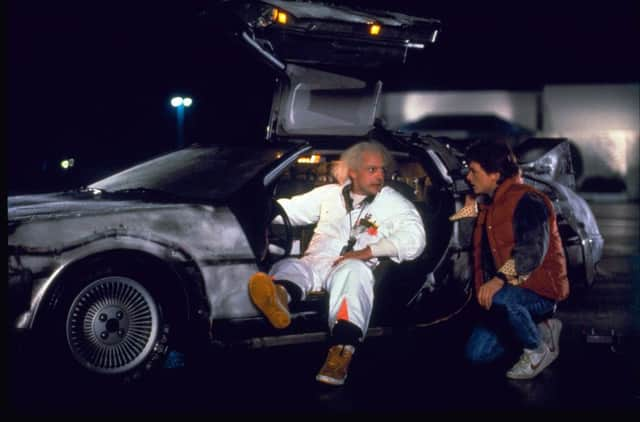We need to get up to speed for the digital future


The 21st of October 2015, is a seminal date for many a film and technology geek; it’s the day in the 1980s blockbuster film Back to the Future that Marty McFly travels to a future world of hover-boards and flying cars … and also, less well-remembered, a world where enhanced digital communications and connectivity are common place through wearable technology and skype-like teleconferencing.
While the film highlights the risks associated with predicting future technology, the importance of digital communications and connectivity now and in the future cannot be underestimated; even if the precise nature of how it will be delivered is harder to predict given the rate of innovation.
Advertisement
Hide AdAdvertisement
Hide AdAs the world changes and digital capability enables more and more in everyday life, it is important that Scotland is at the forefront of this revolution, enabling the whole country to benefit. A digitally enabled Scotland also underpins the Scottish Government’s core commitment to creating opportunities for all to flourish, through increasing sustainable and inclusive economic growth, opportunity and equality.
In 2012, the Scottish Government published“Scotland’s Digital Future – Infrastructure Action Plan.
This action plan outlined its commitment to a world-class, future-proofed digital infrastructure that will deliver connectivity across Scotland. The purpose of the plan is to deliver real change in people’s ability to access the internet, enabling them to connect from their homes, businesses and while on the move; essentially, any device, anytime, anywhere. A key aspect of achieving this world-class vision is to create a comprehensive delivery strategy and road map for supporting investment in digital infrastructure in Scotland, for which Scottish Government has tasked the Scottish Futures Trust (SFT) to take the day-to-day lead in developing.
An important component of this strategy has been to develop an understanding of the potential impact of achieving the vision; to better understand the wide range of benefits that could be stimulated by enhanced digital provision enabling increased public and private sector activity and productivity. Enhanced digital connectivity will also have a significant impact upon the delivery of existing services and products for consumers, businesses and the public sector and drive the development of innovative approaches to how we all live and do business.
To help us consider this impact, SFT commissioned Deloitte to undertake an assessment of the potential impact of enhanced digital capability in Scotland. The work does not seek to predict technology or infrastructure advancements by 2030, but is more focused on a set of digital demand and use scenarios that are intended to capture different pictures of Scotland’s future digital capability and usage; ranging from simply a continuation of current trends through to a transformation in usage and service provision that places Scotland as a digital world leader.
The potential impacts identified make a compelling case for continued development and investment.
GDP increases ranging from £8bn-£13bn a year, the creation of more than 5,000 businesses across Scotland and 30,000 jobs. The biggest magnitude of this growth would be generated in urban areas. However, of perhaps equal importance to achieving inclusive economic growth, the relative impact in rural and semi-rural Scotland is anticipated to be three to four times as great.
The report shines a light on the fact that we cannot afford to stand still and much is already being done to encourage and deliver improved connectivity. The telecoms industry is investing billions of pounds across the country enhancing 4G mobile data coverage as well as widespread investment in fibre infrastructure, both of which are essential components that form a foundation from which to deliver a world-class user experience.
Advertisement
Hide AdAdvertisement
Hide AdGovernment is also investing hundreds of millions of pounds to support this industry investment, and is looking to create, through its planning and legislative frameworks as well as other levers such as business rates and innovative commercial approaches, an environment that encourages even greater levels of investment as well as improved coverage and service quality and resilience.
The regulator, Ofcom, is also currently undertaking a fundamental review of the telecoms sector, and we are encouraging it to look at the market in Scotland and create a regulatory platform to encourage investment and improved quality of coverage and service provision.
While time travel à la Back to the Future is unlikely to be seen in our lifetime, much remains to be done by all of us if the impact of a world-class user experience outlined in our research is to be realised.
• Tony Rose is infrastructure director at Scottish Futures Trust
SEE ALSO